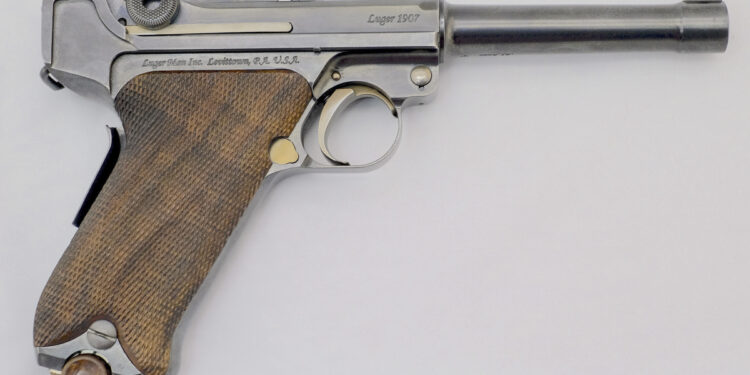Many have complained that the Luger pistol is not a .45 caliber. That was first addressed by Georg Luger in 1907 when he first made the Luger in .45 caliber for the U.S. Army Test Trials of 1907. Fast forward over 100 years and we find Eugene Golubstov, AKA LugerMan, has brought that gun back. Born in Siberia, Golubstov emigrated to America to pursue his love of pistols. Here, he established himself as one of the few men in the world who could restore to new condition (in every way) damaged or otherwise poor condition guns.
Family heirlooms that had been through a house fire, as well as rare and historic guns are the usual recipients of this treatment. It’s not cheap as it often entails welding up pits or adding missing metal, reheat treating fire damaged parts, relining barrels, restoring original markings that have been buffed or worn mostly away, and producing the exact finish the gun had when it left a specific factory. It’s not cheap but the results are identical to a new gun. This can determine the long-term survival of a particular piece, as pristine guns are treasured by museums and individuals while those in poor condition are the first to be culled and discarded. When Golubstov set out to make a duplicate of the original M1907 Test Trials Luger, he made sure to meet the manufacturing standards used by the Deutsche Waffen und Munitions Fabriken (DWM), the original manufacturer of the Luger.
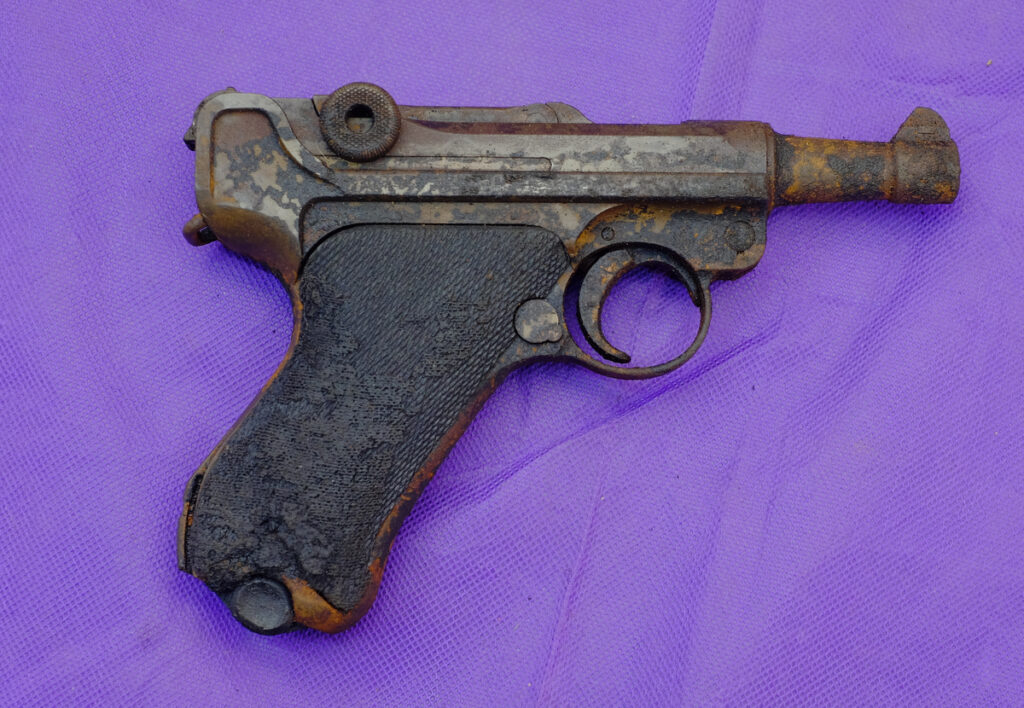
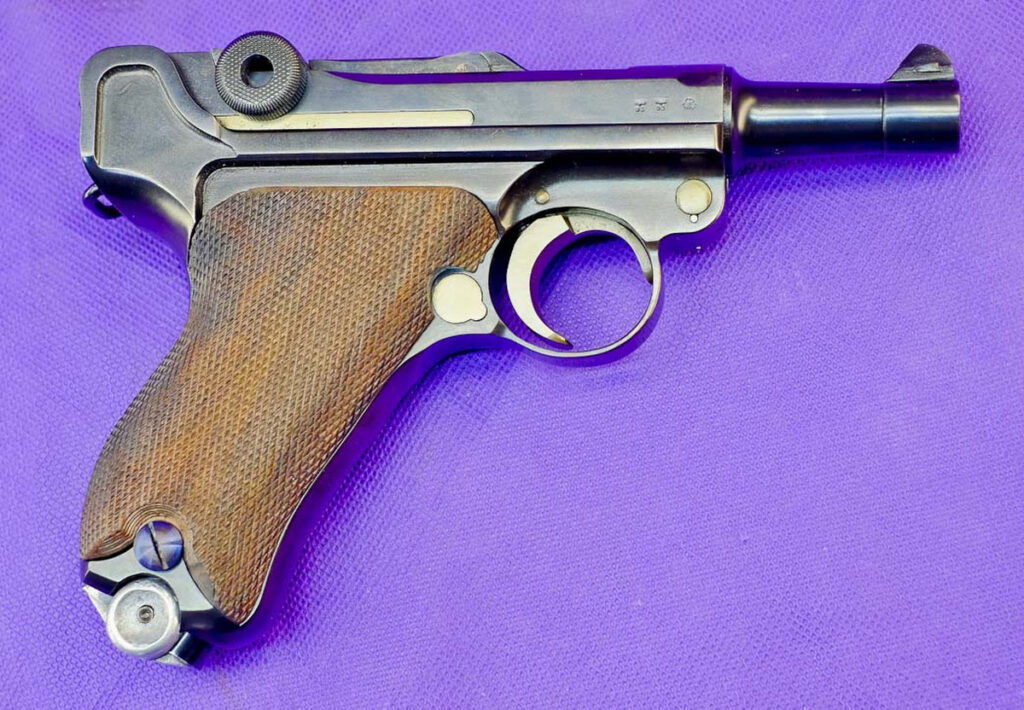
RECREATING THE M1907 LUGER
Golubstov started by obtaining a set of the blueprints of the M1907 Luger that Army Ordnance had drawn up at the time of its 1907 tests. At this time the .45 caliber round had not been standardized and the ammunition at the tests was variable and of poor quality, resulting in Georg Luger making the perfectly reasonable demand (under the circumstances) of being able to provide his own ammo. U.S. Army Ordnance found fault with him and not their ammo over that. As a result, the blueprints did not reflect a gun made for today’s standardized 45 ACP ammo and it was up to Golubstov to make the necessary modifications a century later. Spring tension had to be worked out and the feed ramp had to be adjusted. All of this took time. One thing you will notice is that Luger had made the grip angle slightly less steep to work best with the .45 cartridge.
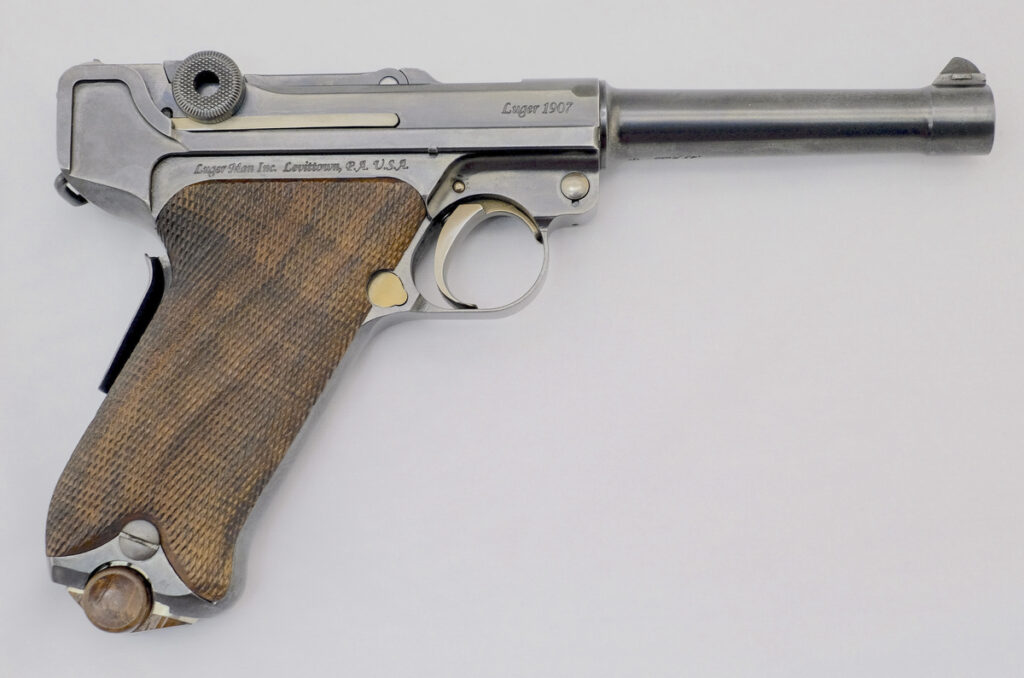
When Golubstov had fired 10,000 rounds through his prototype, he brought it to my farm where we shot a one-inch group at 50 yards with it. While the current generation of pistols often has a lifespan of 5000 to 10,000 rounds, the Luger never seems to wear out just—like the toggle lock Maxim machinegun that inspired it. He also brought a cut down Baby Luger version inspired by Luger’s personal carry pistol. I liked this one a lot. Finally, there was a target version machined to closer tolerances than the regular Lugers.
All of these were made to DWM commercial standards. Finished in the traditional rust blue that takes about 20 hours of labor to produce, this finish is very durable and rust resistant. Golubstov warns customers that some modern lubricants (like WD-40) attack rust, and, over time, can degrade a rust-blue finish. The solution is Ballistol oil which is available now in the U.S. Developed in Germany as the one oil for all the soldier’s equipment, whether it be steel, wood, or leather, Ballistol does not harm a rust-blue finish. The Germans used this oil in both World Wars, and it is still in use in NATO today. When it contacts water, it forms an emulsion and as long as the emulsion is at least 5% Ballistol, the water will evaporate without causing rust while the Ballistol remains. This is the oil we needed in Vietnam.
MADE TO BE USED
Many of Golubstov’s customers buy these guns for personal protection, wanting the natural-pointing, easy-to-hit-with, super accurate Luger but also wanting the perceived stopping power of a 45 ACP. When it’s your life and the lives of your family are at stake, price ceases to be a hindrance. Each gun is function tested with 150 rounds of eight types of ammo to ensure total reliability. Prices are high compared to the mass-produced guns of Colt or Smith & Wesson because these are largely hand-made in a relatively small shop. You get what you pay for, though.
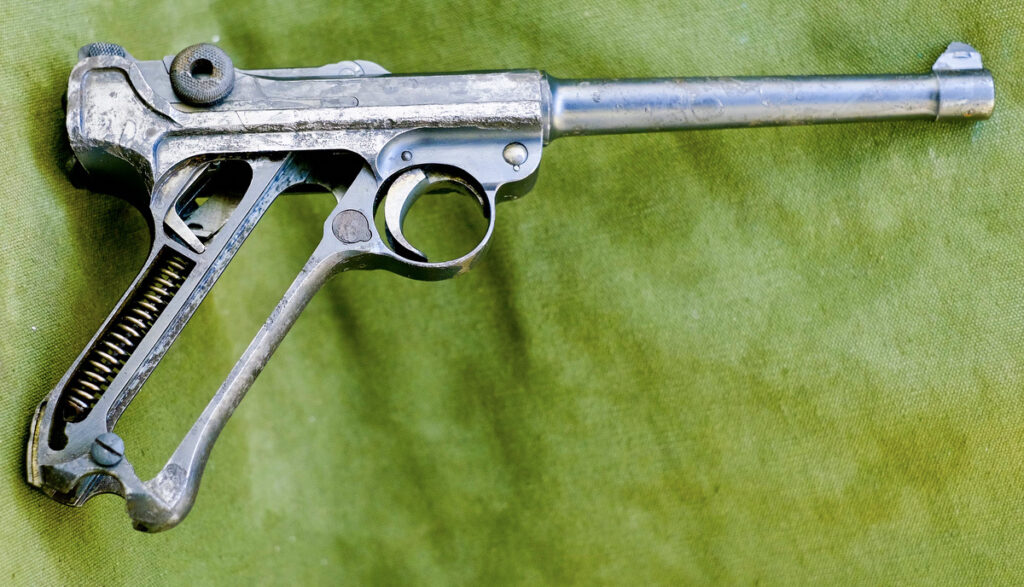
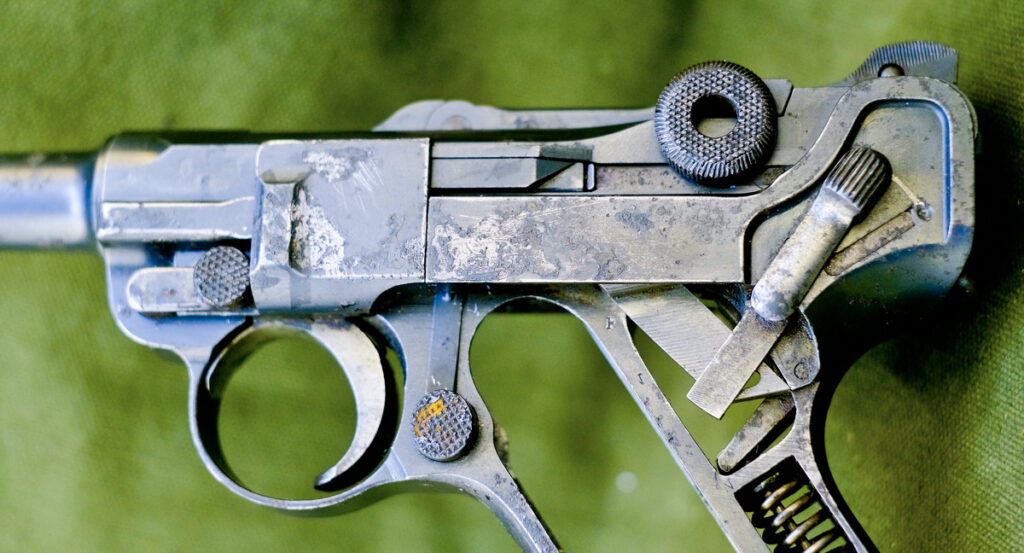
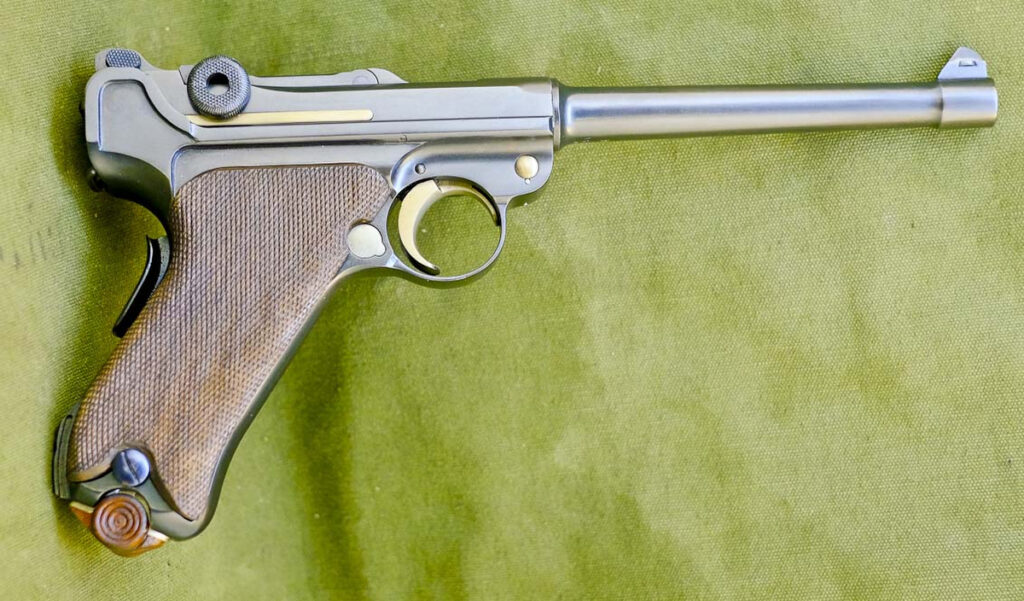
THE 1907 TEST TRIALS
By now you are probably wondering how the Luger did in the 1907 Army Test trials. Actually, it did quite well. Too well to suit Army Ordnance who were still reeling from the backlash that came when they had adopted the Norwegian Krag rifle instead of an American design. They sure didn’t want a repeat of that which was sure to come if a foreign weapon was adopted again.
Before the tests even began, they had already decided that the Browning-designed Colt 45 Auto was what they wanted, but not in its original 1905 form. They were confident that their old pistol supplier, Colt, could iron the wrinkles out of the design if given enough time. Indeed, the final M1911 version has only a passing resemblance to the M1905 that it began as. Revolvers were included in the tests, as Ordnance figured they might need a stopgap handgun if this dragged on too long. The M1909 Colt New Service revolver was the result of these trials.
To give the M1905 Colt .45 automatic a rival to race against, they chose the Savage automatic. This gun utilizes the Searles locking system which does work, but it works so fast that it might as well be a straight blow back design, as it has all the attendant recoil of a straight blow back gun. However, its simple design promised enough reliability to task the Colt gun in competition… even if its excessive recoil when paired with the powerful .45 cartridge made it forever unsuitable for issue. Scaled down to .32 and .380, it sold well commercially as a pocket pistol, though.
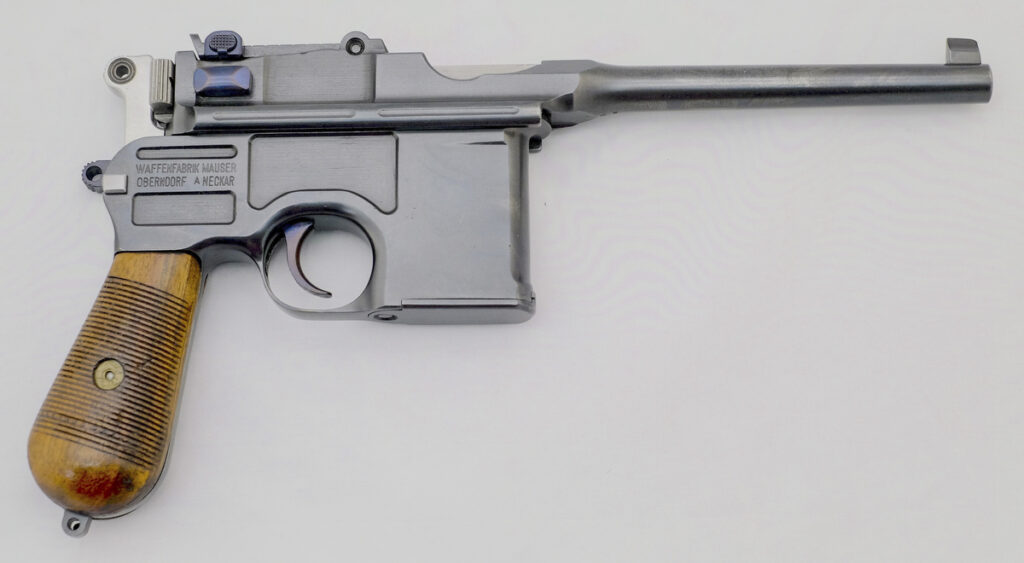
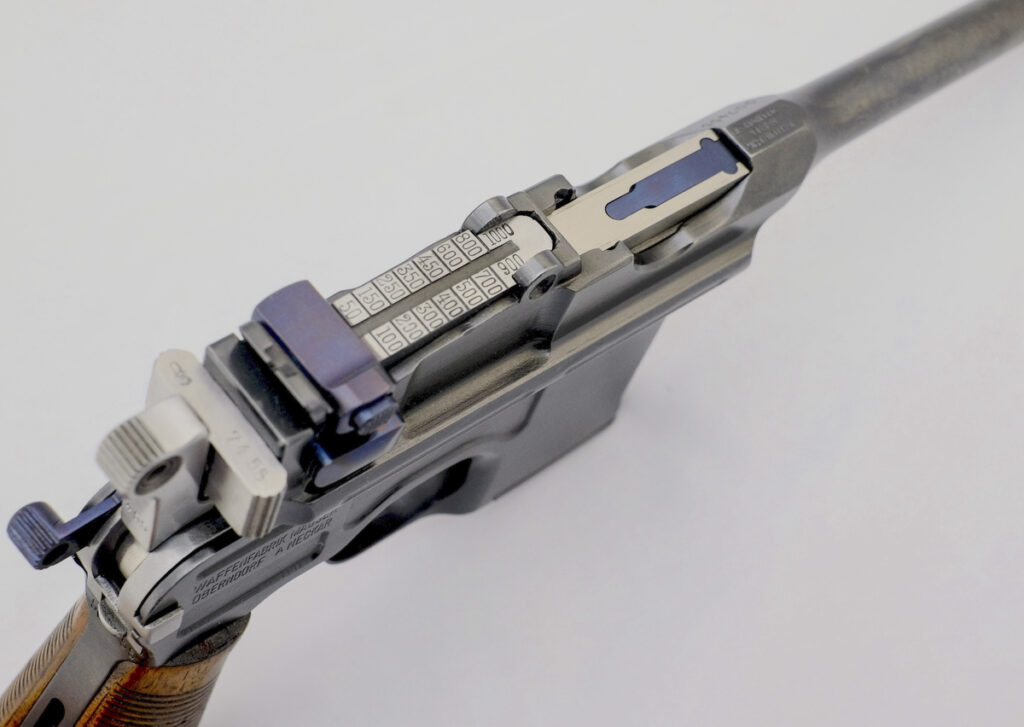
REAL COMPETITION
Other guns were there just to give the impression of an open competition and they were to be gotten rid of as soon as possible, but there was one pistol that they had reason to fear. The Bergman pistol was designed by Louis Schmeisser, who was regarded by some of his contemporaries as a better designer than John Browning. It featured the strongest locking system of all automatic pistols and was exceptionally steady in the hand for precision shooting. When the Bergman needed to replace a defective hammer spring, that was used as a reason to discontinue testing it. However, Ordnance had no problem letting the Savage entry replace its bad main spring in the middle of its test. The Bergman went on to be adopted by Denmark and widely used elsewhere.
A much higher profile gun was the Luger which had been adopted by Switzerland in 1900 and the German Navy in 1904 (Designated the M1906) and was rapidly being adopted by militaries around the world. The Luger gave no excuse to dismiss it though as it was performing well against the Colt and Savage pistols. During the endurance test the Luger had 8 jams in 506 rounds, all of which were cleared by simply slapping the toggle. The M1905 Colt had 24 jams in 500 rounds while the Savage had 18 misfires, 8 failures to eject, and 6 other malfunctions in 500 rounds plus it had to have a new recoil spring after round 151. Malfunctions in the Colt and Savage could not be cleared by a simple slap on the toggle like the Luger but were longer and harder to clear.
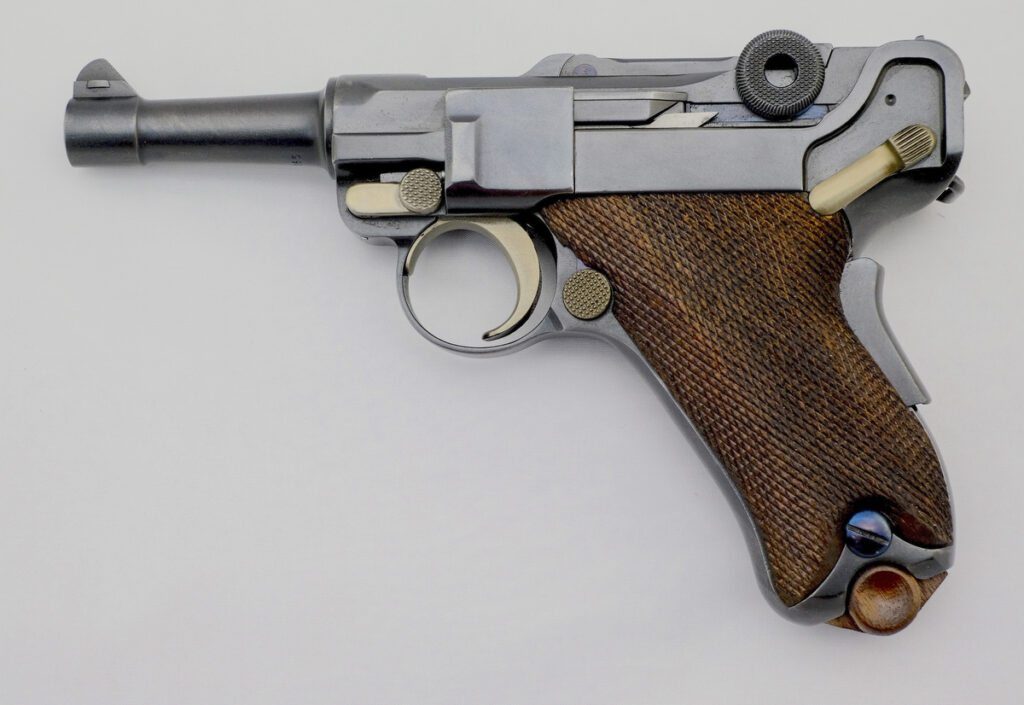
SAND, DUST, RUST
The sand box test went to the Colt. The barrels were corked tightly, and the magazines were empty as a blast of fine sand in a specially prepared box hit the pistols for one minute. Excess sand was removed from the gun by blowing, jarring, and wiping with the bare hand. The Colt had no jams, the Luger had two, and the Savage only was able to fire three rounds.
The dust box test was the same as the sand box test, except that fine dust was used. The Luger had four jams, all of which were quickly cleared by striking the toggle. At Luger’s request, a second magazine was fired resulting in only one jam as the pistol was throwing the dust out of itself as it fired. The Colt had no jams, while the Savage had three misfires and one jam.
The rust test was clearly won by the Luger as it was the easiest to put back in action. In this test the bore was plugged, and the guns were soaked for 5 minutes in a saturated solution of salammoniac for 5 minutes then hanging it up indoors to rust for 22 hours. The Luger had to be manually cocked and the toggle closed by hand to fire. Only the application of oil was required to make it work. No rust removal or tools were required. In sharp contrast, the Colt needed a wooden rod to manipulate the mainspring and release the slide catch. The slide was worked back and forth, and the hammer snapped several times before the test was deemed started. The Savage had to have its parts operated by striking it on a bench and manipulating them by hand before firing. The magazine spring had to be repeatedly forced back and forth by a metal rod before it would work, and the gun could be fired.
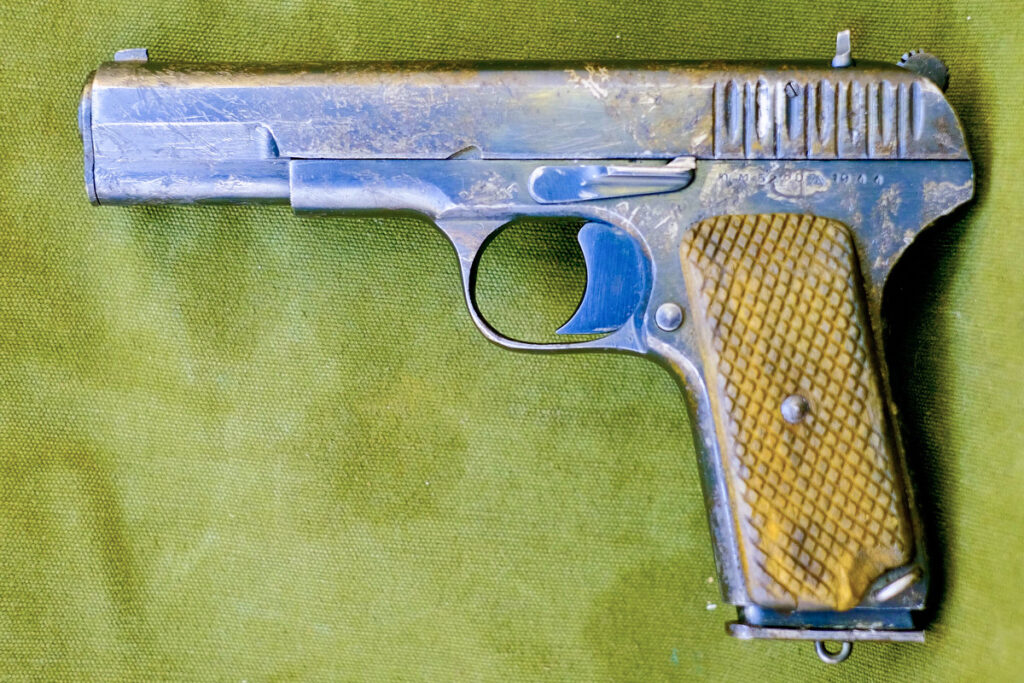

Significantly, there was no test with wet sticky mud. This is where the German P08 Luger earned its reputation in the trenches of WWI as the most reliable pistol used in that conflict. Drop the Luger in the mud of the Western front and it comes up firing, throwing the mud off. Drop a pistol with an exposed hammer in the same mud and it jams the hammer so it can’t fire, as the mud goes inside the gun there. If the barrel is blocked with mud and you fire it, the barrel will bulge. The exposed barrel of the Luger bulges and keeps firing whereas any pistol with a slide has the slide jammed by the bulge so that it cannot work until the barrel is replaced. In WWI if you didn’t end up crawling through the mud, the exploding artillery shells would cover you and your gun with mud.
When it came time for troop trials, Ordnance declined to let the Luger be tested. They said that it didn’t have an inline mainspring. The real reason was that in the earlier 1900 troop trials with the famed American Eagle .30 caliber Luger pistols, a lot of the troops fell in love with the accurate and easy-shooting Luger. Still, everyone knew by now that you couldn’t stop a charging cavalry horse or Philippine Moro with anything less than a .45. The 1907 Luger was a .45. Old Ordnance veterans told me of all the flack Ordnance got over adopting the Norwegian Krag rifle instead of an American design and how they did not ever want to go through that again. Ordnance could not afford the troops favoring a foreign gun, so they didn’t let it go on the troop trials. Luger knew that there was no hope of his pistol being adopted without them, so he went back to Germany to concentrate on getting his 9mm version adopted by the German government. This became the famed P08 of both World Wars.
RECENT DEVELOPMENTS
Golubstov has also made a new version called the P2020 Luger 45 which incorporates two changes to the original design. First, the ejector was changed to a fixed position. The original ejector design is spring-loaded and needs to flex in and out of the slide to allow the breechblock to move. This isn’t good because it creates additional resistance to the gun cycling. Small changes were made to the breechblock and ejector to eliminate the need for the ejector to flex when the breechblock moves, making the gun more reliable.
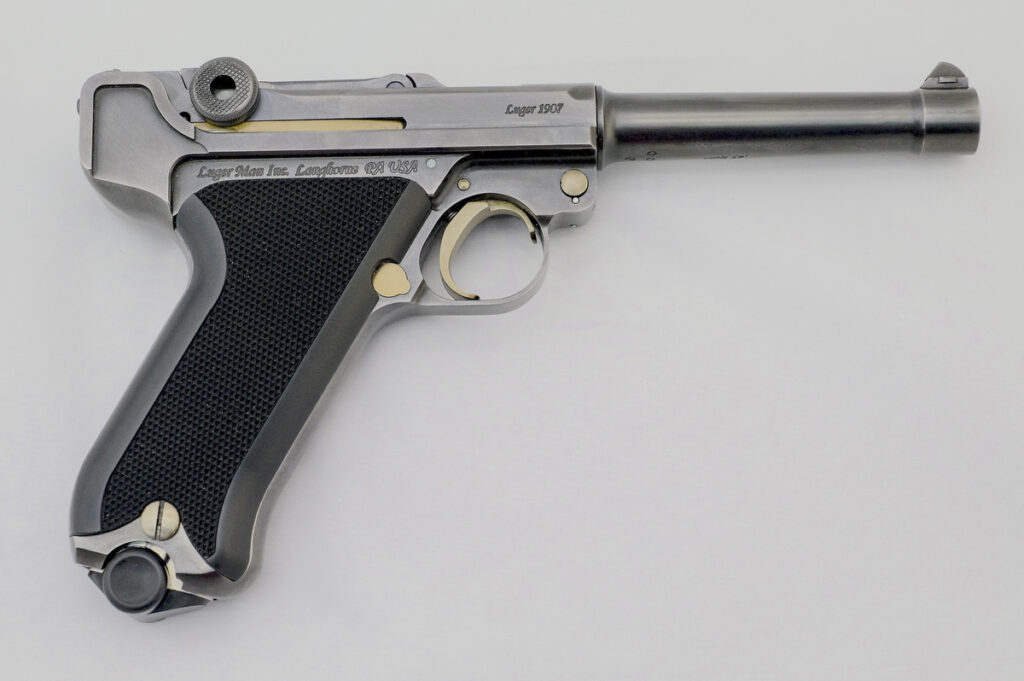
The original Luger hold-open spring is a flat spring in front of the bolt hold-open and was delicate and unreliable. Golubstov moved the spring to the back of the hold open to make it more reliable.
The grip safety is available as an option on the 2020 version, whereas it’s standard on the M1907 version.
All these guns are also available in stainless steel. For an additional $2500, any of these can be turned into a Baby Luger. Existing 9mm Lugers can also be converted to Baby Lugers for the same price. LugerMan also makes any style of holster you may desire to carry them in.
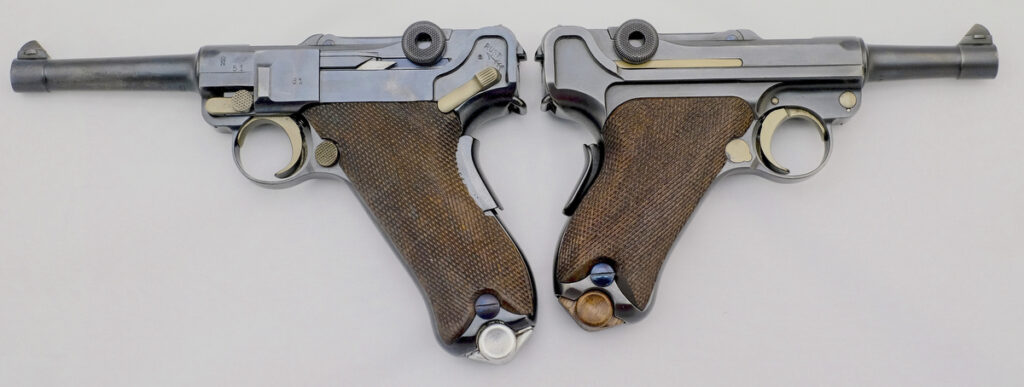
Golubstov can also furnish these guns as target versions for match shooting for $1500 extra. The conversion consists of adjustable Partridge sights, a tighter toggle assembly, and a 6.5-inch target barrel. The Luger is one of the most accurate pistols ever made, so a target version is logical. If speed of firing figures into the match, the Luger wins, hands down, as it’s the fastest cycling of all semi-automatics. Its light toggle is extremely fast and travels only a very short distance. You can fire off a magazine and have all the empty cases in the air at the same time.
For those who want the easiest .45 to hit with in a gun that’s built to the highest quality standards, high enough to stake their life on, the .45 Lugers from LugerMan are the answer.
SPECIFICATIONS
| Make | LugerMan, Inc. |
| Model | Luger P1907 |
| Caliber | 45 ACP, 10mm, 9X25 Dillon |
| Weight | 32 ounces |
| Overall Length | 9.5 inches |
| Barrel | 4.75 Inch |
| Magazine Capacity | 7 |
| MSRP | $8395 |
| URL | LugerMan.com |
| Make | LugerMan, Inc. |
| Model | Luger P2020 |
| Caliber | 45 ACP, 10MM, 9X25 Dillon |
| Weight | 32 ounces |
| Overall Length | 9.5 inches |
| Barrel | 4.75 inch |
| Magazine Capacity | 7 |
| MSRP | $4950 |
| URL | LugerMan.com |



